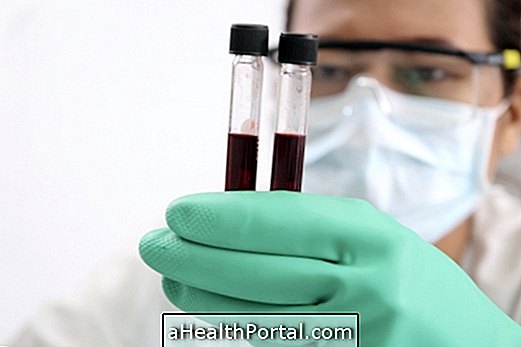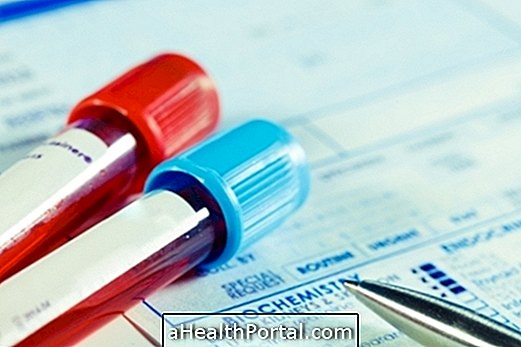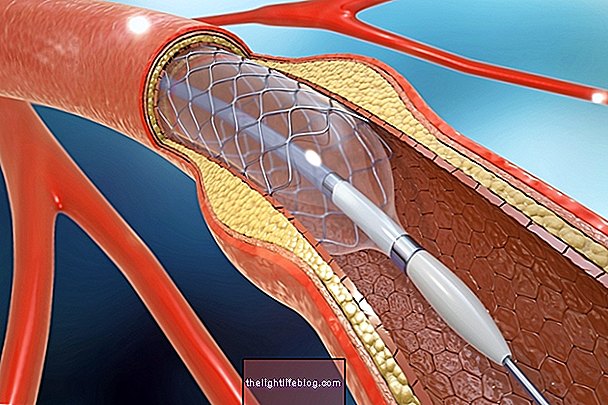Arterial blood gases are a blood test normally performed in-patient in an Intensive Care Unit that aims to verify that gas exchanges are occurring in the correct way and thus assess the need for extra oxygen.
In addition, it is an examination that can be requested during hospitalization to assist in the diagnosis of respiratory, renal or serious infections, as well as to verify if the treatment is being effective and, therefore, can be used as one of the criteria that can influence the discharge of the patient.

How is the exam done?
Arterial blood gas analysis is done by collecting a sample of blood from the artery of the arm or leg. This type of collection is quite painful, since it is a more invasive collection. The collected blood is taken to the laboratory for biochemical tests to check blood pH, bicarbonate concentration and partial CO2 pressure.
Arterial blood gas analysis should not be performed in the case of peripheral arterial disease because there may be difficulties in withdrawing blood, clotting problems or if the person is using anticoagulants. In these cases, the doctor may order other tests to identify the diseases that are causing respiratory changes.
What is it for
Arterial blood gases are requested by your doctor to:
- Check lung function, especially in asthma or bronchitis attacks and in case of respiratory failure - Know what the symptoms are and how the respiratory insufficiency treatment is done;
- It helps to evaluate the pH and acidity of the blood, which is useful to aid in the diagnosis of renal failure and cystic fibrosis, for example;
- Evaluate the functioning of metabolism, which is important in identifying heart disease, stroke (stroke) or type II diabetes, for example;
- Operation of the lungs after surgical procedure or transplantation.
In addition, blood gases are also required in case of drug overdose. Performing this examination is not common, not performed in clinics or in routine consultations, only being requested by the doctor in more serious cases.
Benchmarks and how to understand the test result
The normal values of the arterial blood gas analysis are:
- pH: 7.35 - 7.45
- Bicarbonate: 22 - 26 mEq / L
- PCO2 (partial pressure of carbon dioxide) : 35 - 45 mmHg
The following table indicates some examples of altered arterial blood gas values:
| pH | Bicarbonate | PCO2 | state | Common Causes |
| Less than 7.35 | Low | Low | Metabolic acidosis | Renal insufficiency, shock, diabetic ketoacidosis |
| Greater than 7.45 | High | High | Metabolic alkalosis | Chronic vomiting, hypokalemia |
| Less than 7.35 | High | High | Respiratory acidosis | Pulmonary diseases such as pneumonia, COPD |
| Greater than 7.45 | Low | Low | Respiratory alkalosis | Hyperventilation, pain, anxiety |
The arterial blood gas examination indicates how the lung functions, ie if gas exchanges are being performed correctly, thus indicating the condition of the person that may be acidosis or respiratory or metabolic acidosis. Understand metabolic and respiratory acidosis, metabolic alkalosis, and respiratory alkalosis.
This examination is not sufficient to close the diagnosis, it only suggests respiratory, renal or metabolic disorders, and other complementary tests, such as x-rays, tomography, other blood tests and urine tests are usually requested by the doctor so that the diagnosis can be closed and the treatment can be started according to the cause of the change in blood gases.
What is the difference between arterial and venous blood gases
Arterial blood gases determine the exact amount of oxygen and whether the kidneys and lungs are working properly, which helps in the diagnosis of lung, kidney, and infection.
Venous blood gases, on the other hand, are performed as a second option when collection in the artery is not possible, and collection is done in the vein, and its main objective is to aid in the diagnosis of peripheral arterial diseases or blood clotting problems.























